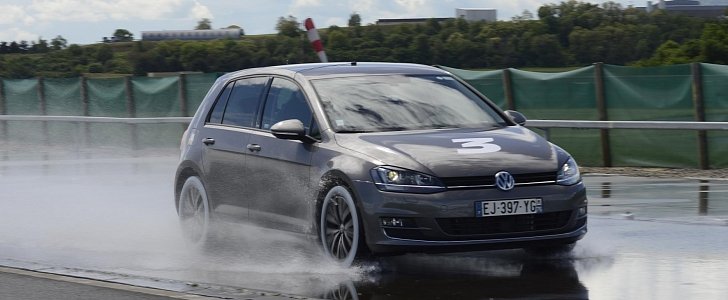Tires are the last thing related to their vehicles that some people are willing to invest money in - "as long as they're not flat and there's still some meat on the treads, they'll do just fine," they'll say.
It's almost as if they forget the rubber isn't there just to make riding on the hard asphalt a much quieter and less bumpy affair, but also ensure there is optimal grip between the two surfaces in contact. If you drove over a glass floor and then went under it to see just how large - or rather tiny - the four contact patches are, you'd give a lot more thought to your next set of tires.
It all starts with buying the right type of tire from a trusted manufacturer, but it doesn't end there. You must also keep an eye on their condition throughout their lifecycle and change them when they become too worn. But when is that?
Well, we all know about the three-millimeter tread depth rule, but does it make any sense or is it just the equivalent of an old wives tale among drivers? French tire manufacturer Michelin comes along and tells us we shouldn't be in any hurry to change the casings on our wheels, and should instead make the most of them.
The company launched the program "The truth about worn tires," where it pushes for industry test bodies and consumer organizations to start testing the tires when worn to the legal limit.
Since the road surface on most of the globe is predominantly dry, the safety indicator should be how the tires handle under these conditions. Luckily, as they get worn down, contrary to popular belief, their performance actually increases. A used tire will have shorter brake distances on dry roads, it will consume less fuel, and will make less noise.
But what about when it does rain? Michelin points out that a good tire will not have wear affecting its braking performance in the wet to a significant level. It may not perform as well as when new, but putting the safety hazard and the overall performance of the tire during all the stages of its life into context makes those minute losses irrelevant.
Michelin commissioned Ernst & Young to calculate how much money would European drivers waste if they changed their tires at 3 mm instead of 1.6 mm, and the result is staggering: $7.66 billion (€6.9 billion). Add all the extra fuel burnt due to the increased consumption brought by the newer tires and the unrecyclable materials, and you also have a significant environmental impact. So what Michelin is saying is that we should buy good tires and keep using them for as long as possible, instead of going for cheap ones and switching them more quickly. It's not only more economical, but also a lot safer.
It all starts with buying the right type of tire from a trusted manufacturer, but it doesn't end there. You must also keep an eye on their condition throughout their lifecycle and change them when they become too worn. But when is that?
Well, we all know about the three-millimeter tread depth rule, but does it make any sense or is it just the equivalent of an old wives tale among drivers? French tire manufacturer Michelin comes along and tells us we shouldn't be in any hurry to change the casings on our wheels, and should instead make the most of them.
The company launched the program "The truth about worn tires," where it pushes for industry test bodies and consumer organizations to start testing the tires when worn to the legal limit.
Since the road surface on most of the globe is predominantly dry, the safety indicator should be how the tires handle under these conditions. Luckily, as they get worn down, contrary to popular belief, their performance actually increases. A used tire will have shorter brake distances on dry roads, it will consume less fuel, and will make less noise.
But what about when it does rain? Michelin points out that a good tire will not have wear affecting its braking performance in the wet to a significant level. It may not perform as well as when new, but putting the safety hazard and the overall performance of the tire during all the stages of its life into context makes those minute losses irrelevant.
Michelin commissioned Ernst & Young to calculate how much money would European drivers waste if they changed their tires at 3 mm instead of 1.6 mm, and the result is staggering: $7.66 billion (€6.9 billion). Add all the extra fuel burnt due to the increased consumption brought by the newer tires and the unrecyclable materials, and you also have a significant environmental impact. So what Michelin is saying is that we should buy good tires and keep using them for as long as possible, instead of going for cheap ones and switching them more quickly. It's not only more economical, but also a lot safer.

